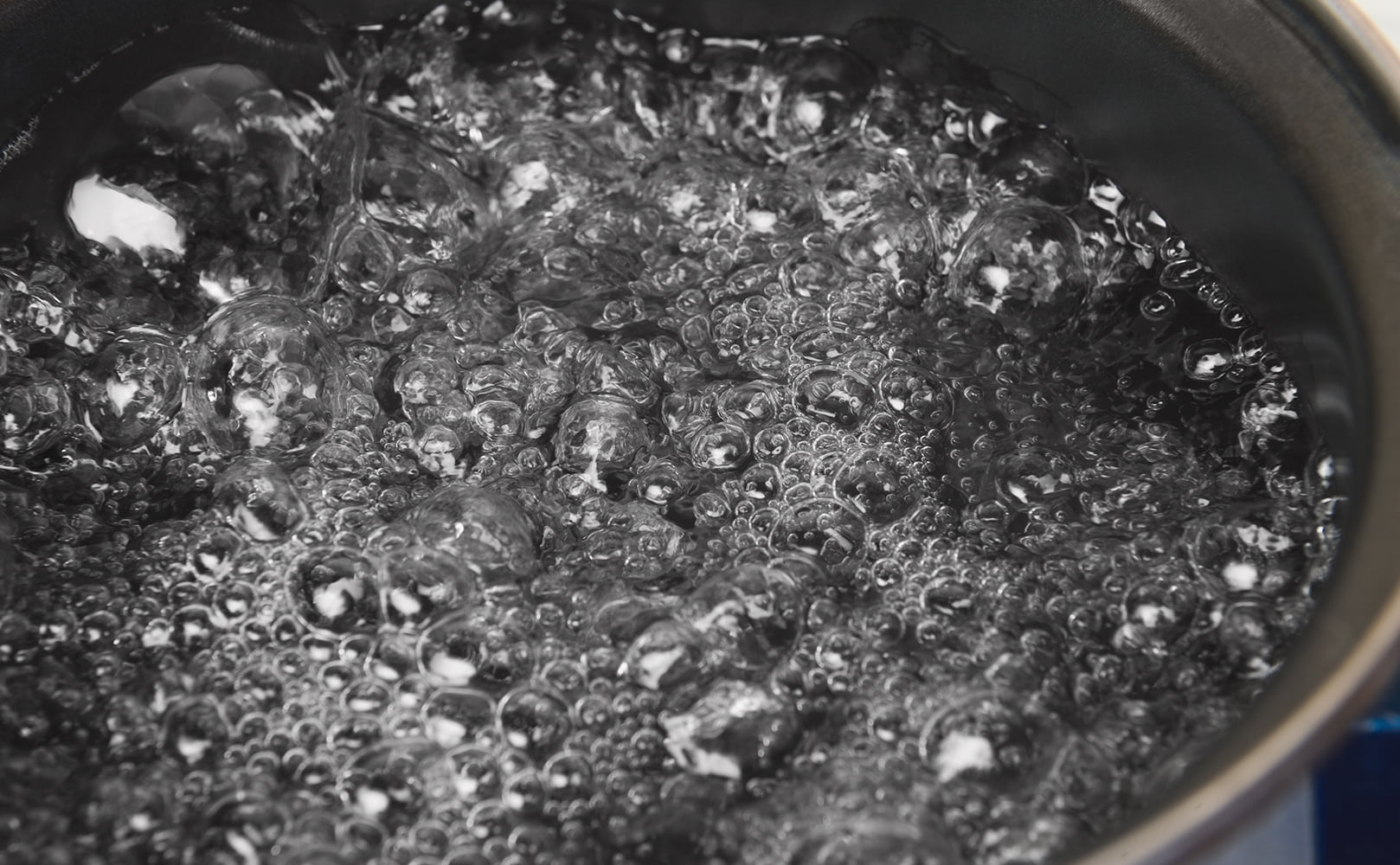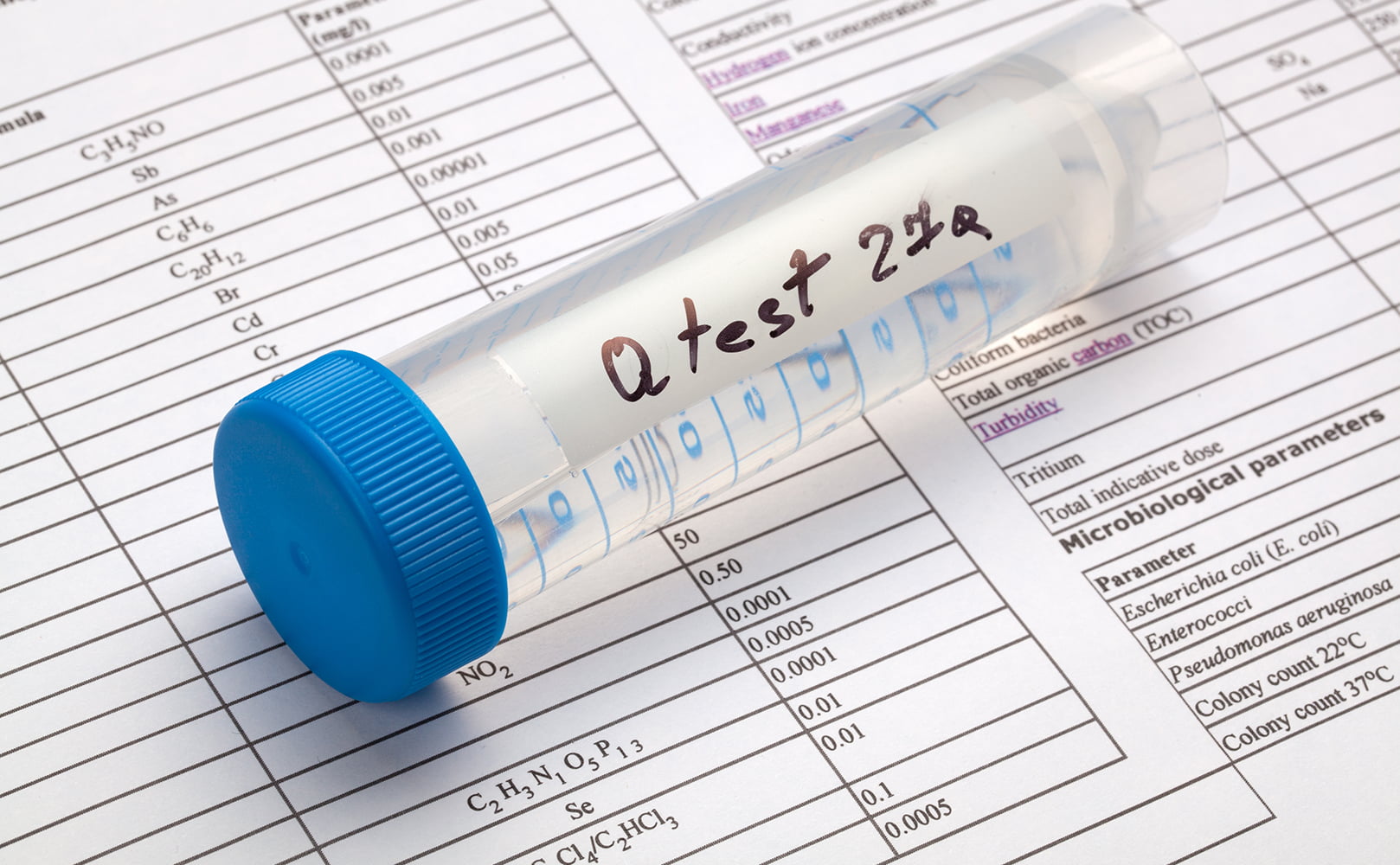Does Boiling Water Remove Lead?
Written by: Tommy Stricklin // Last Updated: Oct 6, 2022
This page may contain affiliate links. If you buy a product or service through such a link we earn a commission at no extra cost to you. Learn more.
This post was created in collaboration with SpringWell Water. We thank the author Tommy Stricklin who is Springwell’s chief water specialist for the time and effort he put into this. Over to Tommy!
People are often advised to boil their drinking water to destroy contaminants and make it safe for drinking.
While boiling water does inactivate some harmful stuff like E. coli bacteria, it doesn’t work for most other pollutants, especially heavy metals like lead.
Though lead rarely occurs naturally in water, it can get into your water supply when the piping system corrodes over time. Acidic water with low mineral content is particularly at risk.
So, yes, your home water may have lead, but boiling it is not a viable solution. Find out more on the topic below!
Key Takeaways
- Boiling water does not remove lead.
- In fact, it may even increase lead concentrations as some of the water evaporates.
- The purpose of boiling water is to kill bacteria, viruses, and other microbes, and get rid of volatile chemicals.
Does Boiling Water Remove Lead?
The purpose of boiling water is to kill bacteria, viruses, and other microbes, and that’s all there is to it – nothing more, nothing less.
Boiling water does not remove any contaminants, unless they’re volatile and have a boiling point at or lower than the boiling point of water, which is the case for chlorine for example but certainly not for lead.
Even worse, if you boil water thinking you’re reducing lead levels, you may actually be doing the exact opposite. How? When you boil water, some of it evaporates. This reduces the total amount of water. As a result, you increase lead concentrations.
The only thing that works for lead removal is a water filtration system.
So to clarify, does boiling water remove lead? No, it doesn’t.
What Is Lead?
Lead is a bluish-gray metal that makes up around 0.00013% of the Earth’s outer layer.
Today, you can find the element almost everywhere around your environment, including in water, soil, and air. Most of the time human activities like mining, fossil fuel burning, and manufacturing are to be blamed.
Lead compounds are also utilized to make different products such as paint, batteries, and ceramics. The usage of these items contributes to the increase in the amount of lead in our surroundings.
As such, a few countries have strict regulations for the use of lead-containing products in order to fight pollution.
Because of these regulations, the amount of lead in our bodies is low compared to several years back.
What Happens If Your Drinking Water Contains Lead?
The inhalation and ingestion of lead can cause several health problems. For instance, a water crisis incident in Flint exposed how lead-contaminated drinking water affects children. The occurrence took the life of 9 kids, and 80 got severely sick after drinking lead-laden water.
Symptoms of Lead Poisoning
Sadly, even a small amount of ingested lead can pose a serious health risk. The most common symptoms include
- Headaches
- Joint pain
- Fatigue
- Muscle pain
- Hearing loss
- Vomiting
- Loss of appetite
- Constipation
- Weight loss
Aside from that, lead can also increase the chance of high blood pressure, kidney dysfunction, cardiovascular conditions, and reproductive issues for both females and males.
Kids can suffer from long-term effects, including loss of concentration, constipation, brain damage, and poor physical development.
Pregnant women are also at high risk of lead poisoning. The element can pass the placental barrier and may ultimately cause premature birth or miscarriage in the worst-case scenario.
A Safe Lead Level?
Lead – less or more – is not safe in your drinking water. Even if you only ingest a very small amount each day, over time, it will build up in your body and cause lots of problems later on.
This explains why the EPA (Environmental Protection Agency) has set the maximum recommended lead level in drinking water to zero. The actionable level is 15 ppb (parts per billion).
This clearly indicates how extremely low levels of lead can be detrimental, too.
By the way, bottled water isn’t allowed to have more than 5 ppb lead.
Once lead has entered the bloodstream, it can lead to problems like poor development of the nervous system and brain. From here, there’s no going back. So, doctors recommend limiting lead exposure at all costs.
How Does Lead Get Into Our Drinking Water?
As stated earlier, natural water does not contain lead for the most part. However, lead pipes used in plumbing systems and distribution channels can contaminate your water.
This was the primary reason why Congress banned the use of lead pipes in 1986. Sadly, many old homes still use lead pipes.
Further, even if your home uses copper pipes and you might think your water is free from lead, unfortunately, that’s not always the case. Here’s why:
An American Water Works Association survey concluded that around 6.1 million water distribution lines containing lead are still in use throughout the United States.
So, if you’re using a distribution network that has lead pipes, you’re at risk.
Aside from lead pipes, old lead solder found in homes constructed before 1986 is also to blame.
What’s more, it is crucial to note that water with low pH levels corrodes pipes and solder faster and contributes to lead leaching into the water.
If you’re on a private well, the chance of lead in your water is low. However, we cannot guarantee it since an old pump in the well could also contribute to lead contamination.
How Do I Know If There Is Lead in My Water?
Before discussing how you can remove lead, it is important to understand the biochemistry of your water. Simply put, if you do not know the concentration of lead and other contaminants in your water supply, you won’t be able to find an appropriate treatment solution.
Note that lead is neither visible in water nor affects it smell and taste. The only way to determine lead water levels is following standardized testing procedures.
Testing
When it comes to water testing, you can go with one or another method. Here’s what you can try.
- Laboratory testing. The most reliable way to determine lead levels in your water is by sending a sample to a certified laboratory. However, note that lead concentrations in water are inconsistent, and hence it is wise to carry out multiple tests to be sure about the exact amount.
- DIY lead water test kits give immediate results, but they compromise on accuracy. Besides, some kits only inform you about the presence of lead but do not specify the exact amount.
- Local water quality report. City water suppliers have to check their water quality annually and publish reports highlighting water sources and contaminants. You can get your consumer confidence report through the EPA’s database. It should list lead levels. Just know that local water quality reporting may lack accuracy as it doesn’t consider lead that can enter your water through household plumbing or distribution channels.
How to Remove Lead from Water?
Let’s briefly discuss the only real prevention technique to limit lead exposure through water in the first place: Trying to get rid of all the lead sources (solder, pipes, well pump) if possible.
Yes, going this route can get costly. Besides, if distribution channels are the culprit, you can’t do much here anyway.
Alternatively, here’s what else you can do: Install a lead water filter!
Do Water Filters Get Rid of Lead?
Yes, certain water filters provide an easy, safe, and reliable method to reduce or remove lead. Here are the filter types you can use:
- Carbon-based water filters. Activated carbon filters, including block carbon and granular activated carbon (GAC), adsorb lead along with other chemicals. Nonetheless, not all carbon filters eliminate lead entirely.
- KDF + ion exchange. Both KDF and ion exchange filter media can be used to remove lead from your drinking water effectively.
- Reverse osmosis systems can also remove more than 99% of lead!
- Distillation. Water distillation uses evaporation to purify drinking water, leaving all contaminants behind.
If you’re uncertain about a lead filter’s reliability, look for NSF certifications. This ensures that a it works per the claims made.
You need to check for NSF standard 53 certifications for standard lead filtration systems and NSF standard 58 for RO systems.
That said, just because a water filter is NSF 53 or 58 certified does not indicate that it will remove lead. Both standards cover several different contaminants, and you need to check the laboratory reports for lead reduction specifically.
Also, compare how much lead each water filtration system can remove and go with the one that does most. Simply put, some filters are more efficient than others.
Other Ways to Reduce Lead in Water
Here are two other ways to prevent notorious lead from entering your body.
- When water stays in contact with lead pipes for a long time, it increases the chance of contamination. So, before using water in the morning, open the tap and let some flow before you drink it. Yes, this doesn’t seem like a practical solution, but it serves the purpose temporarily.
- Avoid using hot water directly from the tap. Hot water absorbs more lead from pipes than cold water. If you still need hot water, you can heat cold tap water on the stove or in a kettle.
If you have any thoughts about the question, does boiling water remove lead, please don’t hesitate to leave a comment below!
Information provided on BOS is for educational purposes only. The products and services we review may not be right for your individual circumstances.
We adhere to strict editorial guidelines. Rest assured, the opinions expressed have not been provided, reviewed, or otherwise endorsed by our partners – they are unbiased, independent, and the author’s alone. Our licensed experts fact-check all content for accuracy. It is accurate as of the date posted and to the best of our knowledge.



